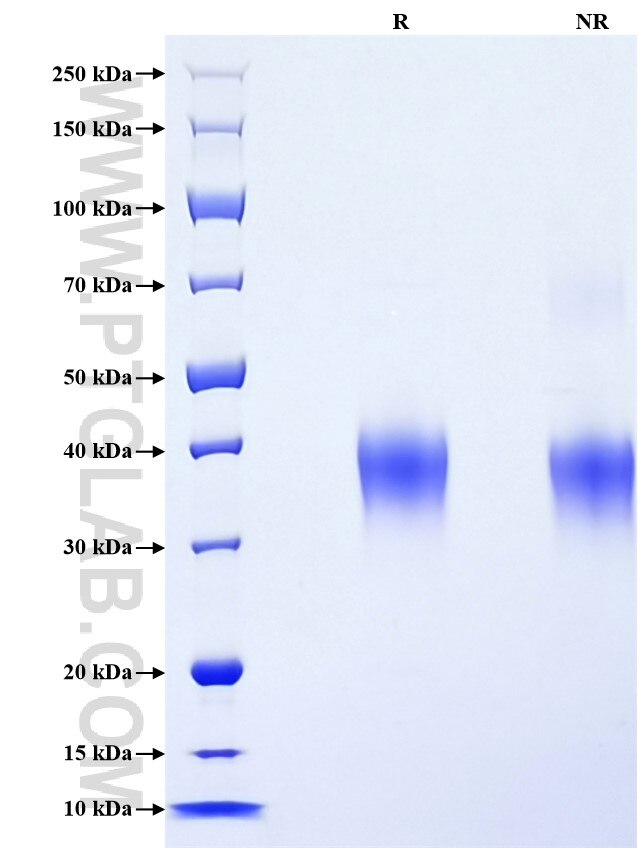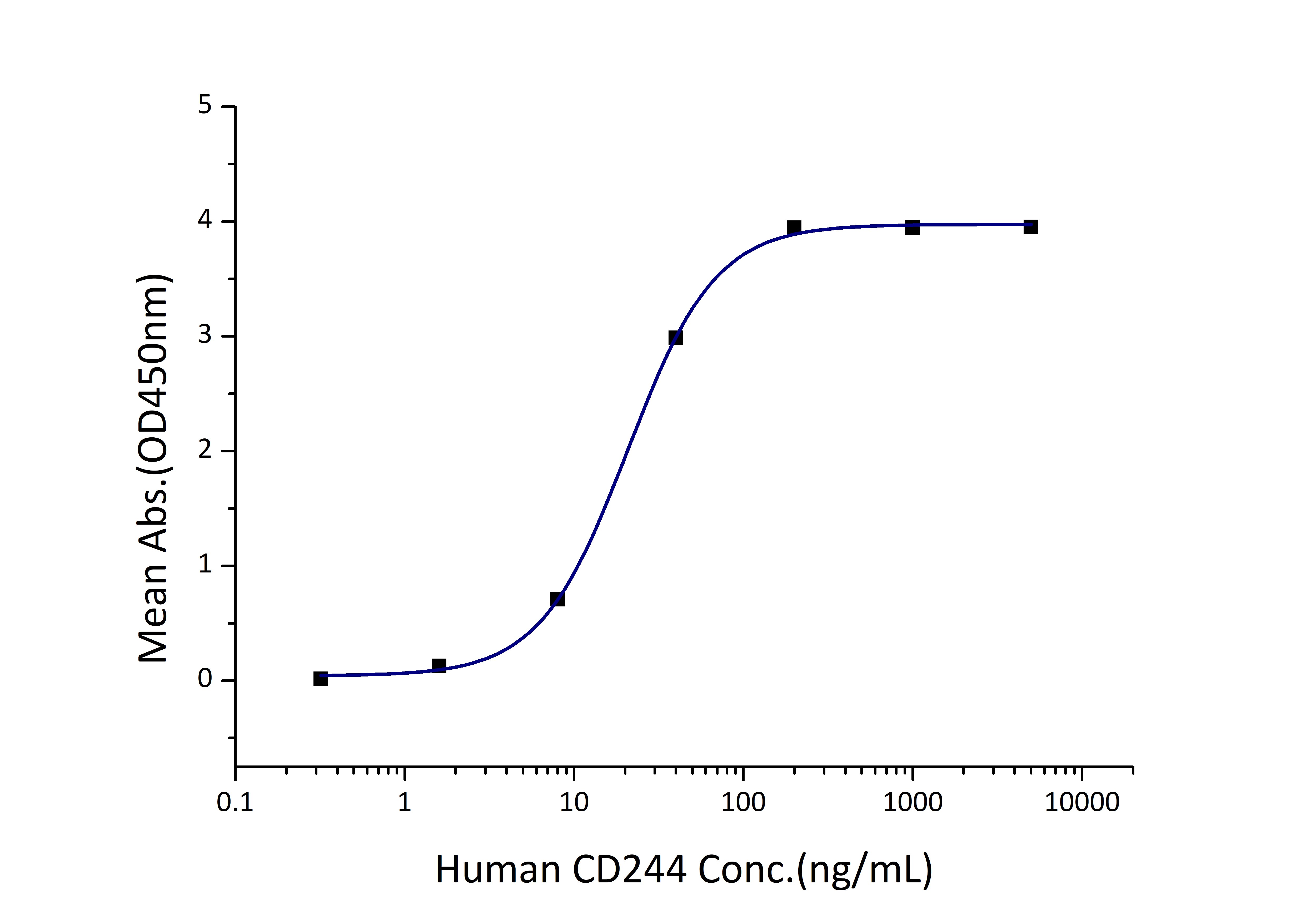Recombinant Human CD48 protein (His Tag)
Species
Human
Purity
>90 %, SDS-PAGE
Tag
His Tag
Activity
EC50: 10-41 ng/mL
Cat no : Eg1005
Validation Data Gallery
Product Information
| Purity | >90 %, SDS-PAGE |
| Endotoxin | <0.1 EU/μg protein, LAL method |
| Activity |
Immobilized Human CD48 (His tag) at 2 μg/mL (100 μL/well) can bind Human CD244 (rFc tag) with a linear range of 10-41 ng/mL. |
| Expression | HEK293-derived Human CD48 protein Gln27-Ser220 (Accession# P09326) with a His tag at the C-terminus. |
| GeneID | 962 |
| Accession | P09326 |
| PredictedSize | 23.4 kDa |
| SDS-PAGE | |
| Formulation | Lyophilized from 0.22 μm filtered solution in PBS, pH 7.4. Normally 5% trehalose and 5% mannitol are added as protectants before lyophilization. |
| Reconstitution | Briefly centrifuge the tube before opening. Reconstitute at 0.1-0.5 mg/mL in sterile water. |
| Storage Conditions |
It is recommended that the protein be aliquoted for optimal storage. Avoid repeated freeze-thaw cycles.
|
| Shipping | The product is shipped at ambient temperature. Upon receipt, store it immediately at the recommended temperature. |
Background
CD48, also known as BLAST-1 or BCM-1, is a member of the signaling lymphocyte activation molecule (SLAM) family and is involved in immune cell adhesion and activation. It is a glycosylphosphatidylinositol (GPI) -anchored cell surface glycoprotein that interacts with various cell surface receptors, including CD244 (2B4) and CD2. CD48 plays a crucial role in regulating immune responses by mediating cell-cell interactions and signaling pathways that influence T cell activation, NK cell function, and the formation of immune synapses. Soluble CD48 (sCD48) is detected in human serum and plasma. sCD48 may serve as a potential therapeutic agent for inflammatory diseases by modulating immune cell activation and cytokine signaling.
References:
1. McArdel, Shannon L et al. Clinical immunology (Orlando, Fla.) vol. 164 (2016): 10-20. 2. Smith, G M et al. Journal of clinical immunology vol. 17,6 (1997): 502-509. 3. Breuer, Oded et al. Journal of immunology research vol. (2018): 4236263.


